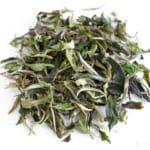- HOME >
- Origin of Tea
2017 Spring Tea from Tsukigase in Nara
- [2017.06.16] Posted By Akira Hojo
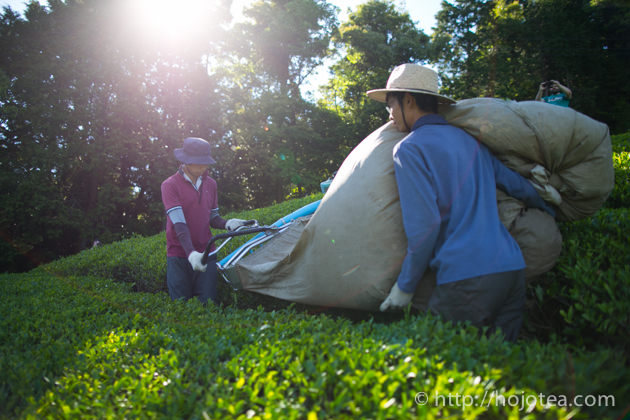
I have visited Tsukigase in Nara to survey the progress of spring tea and their production. It was just in the mid of tea season. I met with our tea manufacturer and we exchanged a lot of innovative ideas regarding tea processing, and I inspected the outcome of the experimented teas. This year we are planning to introduce a few types of tea from Tsukigase.

We specially requested seedling tea
Our tea manufacturer in Tsukigase strictly practices natural farming method. They are totally not using any pesticide. In addition, they never use any nitrogen fertilizer. They will only use the compost produced from the surrounding weeds.
Our tea comes from the tea garden that is specially dedicated for us. Every year our tea is collected from the same garden.
We are very particular about the tea from the tea tree grown with seedling method. Seedling means tea tree is planted from a seed. Nowadays, it is very rare to have tea tree grown with seedling method. Normally, most people are interested with the cultivated tea such as Yabukita, Sayama-Kaori or Okumidori. With the seedling method, the roots of the tree are growing straight under the ground. The roots are very long and it grows deep. It absorbs mineral very effectively.
As for the cultivated tea, it is propagated by sticking. The root grows wide and shallow; the roots spread widely under the surface of the ground. It is very less effective to absorb minerals, as the root is not deep enough; instead it is very suitable to absorb fertilizer.
I always emphasize on minerals and poly phenol content in tea. These substances directly affects to the after taste and clarity in taste. In Japan, the tea grown with seedling method is called Zairai. Sometimes people called it as Zairai cultivar. But it is incorrect way to use these words. Zairai is the seedling tea, whereas cultivar refers to cultivated tea propagated by cutting and sticking the tea twigs from the mother tree.
This year we have requested the following teas:
Black Tea with muscatel flavor
We newly added a black tea from Tsukigase. This Tsukigase Black Tea is custom-made following my own criteria. I requested very long withering until it produces strong sweet aroma like those sweet fragrance we experienced when we produced white tea in Yunnan. In order to enhance the effect of the long withering and bring up the strong muscatel flavor, we optimize the fermentation process to a minimal level. Usually, the strikingly sweet fruity flavor will diminished if the fermentation process is too lengthy.
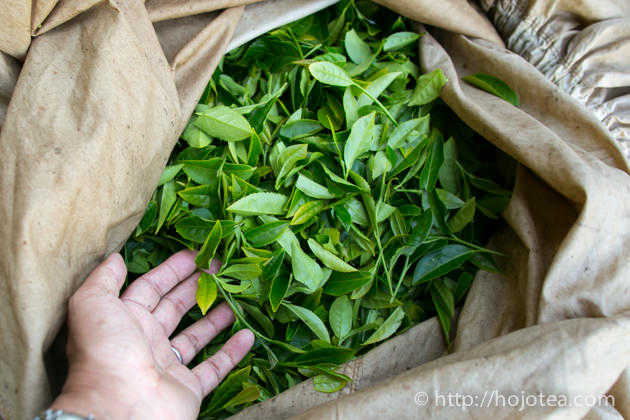
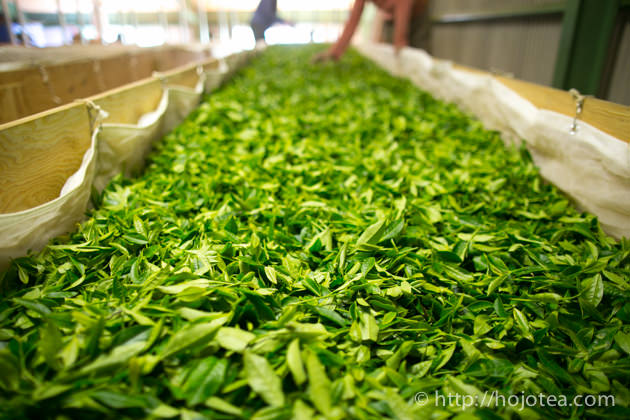
Withering

Fermentation
Tsukigase Asamomi Sencha
Asamomi in Japanese means light rolling. In processing Japanese tea, the rolling process involves a lot of heat. During the rolling process, hot air is constantly blown. As a result, the flavor of tea is oxidized due to the heating, and the more rolling involves, the extent of oxidation increases.
Our aim is to have Japanese green tea that retains the fresh tea leaf flavor and lasting for multi-brewing. As such, we designed the process to make the lightly-rolled sencha. This year we made some improvements. We placed the fresh tea leaf in the forest for a day to conduct the natural withering process. In addition, we drastically shorten the steaming process in order to minimize the distraction of flavor. As a result, we achieve very fresh floral flavor with Tsukigase Asamomi Sencha.
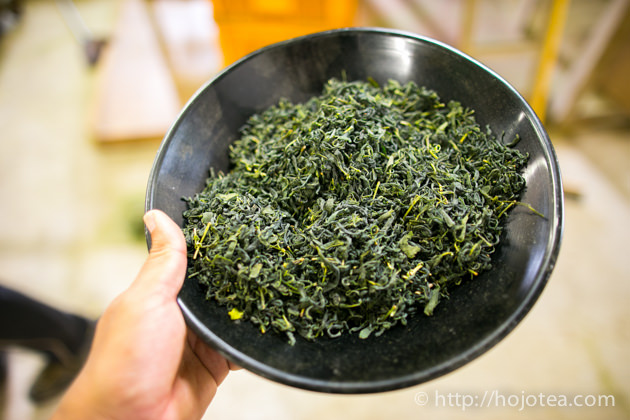
Tsukigase Zairai Sencha
This is our standard lineup that we have been introducing it in the past several years.
In a few hundred million years ago, Tsukigase was at the bottom of Biwa Lake. Biwa Lake is the biggest lake in Japan. Now it is located in the Northern part of Shiga prefecture. Since Biwa Lake has disappeared from Tsukigase area, the land has changed a lot by river erosion.
Now if we visit Tsukigase, we will notice a number peaks of small mountains. Interestingly, the height of those small mountains are the same. In fact, the peak of those mountains are exactly where used to be the bottom of the old Biwa lake. So it is very important to choose the tea garden that is located around the peak of those small mountains.
Every year our tea manufacturer reserve one of the specific tea gardens from these small mountains for our Tsukigase Zairai Sencha. Thanks to the soil that is rich in minerals, seedling tea tree and natural farming practice, tea does not gives Umami at all like ordinary sencha, instead it gives very clear and floral scent. We love this tea because of long-lasting flavor and sweetness with a clear and refined drinking sensation.
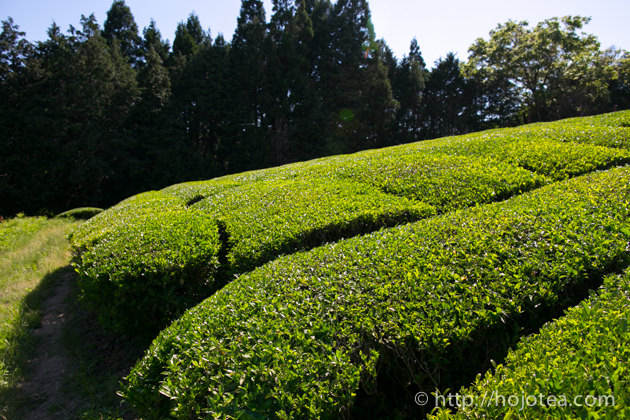
Tea garden right after the harvest.
Related Articles
How to get the latest update on HOJO?
1. Follow Twitter, 2. Click "Like" on Facebook, and 3. Subscribe in newsletter. You can have the latest tea news from HOJO.
 Subscribe the Newsletter to enjoy the privileges
Subscribe the Newsletter to enjoy the privileges- You may receive a free sample upon purchase, or you may have the priority to purchase special products. So please remember to subscribe our newsletter as well as the social network.
- Fresh 2025 Yunnan White Tea – Select Your Favourite Lot Before Blending
- Freshly crafted in Yunnan and just arrived in KL, our new 2025 white tea is now available at our Gardens Mall …
- 2024 Dong Shan Raw Pu-erh Tea – Crafted with the Producer for Desired Quality
- We have released the 2024 cake of Dong Shan Raw Pu-erh Tea. Earlier, we offered the loose-leaf version from th …
NEW ARTICLES
 Fresh 2025 Yunnan White Tea – Select Your Favourite Lot Before Blending
Fresh 2025 Yunnan White Tea – Select Your Favourite Lot Before Blending- Freshly crafted in Yunnan and just arrived in KL, our new 2025 white tea is now available at our Gardens Mall …
 2024 Dong Shan Raw Pu-erh Tea – Crafted with the Producer for Desired Quality
2024 Dong Shan Raw Pu-erh Tea – Crafted with the Producer for Desired Quality- We have released the 2024 cake of Dong Shan Raw Pu-erh Tea. Earlier, we offered the loose-leaf version from th …
 Development of Firewood Roasted Hojicha Using Naturally Grown Tea from Yunnan
Development of Firewood Roasted Hojicha Using Naturally Grown Tea from Yunnan- We are currently staying in Yunnan Province for tea production. As the season nears its end, tea trees with pa …
 Exploring the Food Culture of Yunnan: Where Minority and Sichuan Cuisines Meet
Exploring the Food Culture of Yunnan: Where Minority and Sichuan Cuisines Meet- We are currently staying long-term in Yunnan Province for spring tea production. On rainy days or when there i …
 New Arrival of Akitsu Mumyoi and Nosaka Rough Clay Teapot
New Arrival of Akitsu Mumyoi and Nosaka Rough Clay Teapot- A wide selection of teaware by Watanabe Tozo, a Sado-based artist of Mumyoi-yaki, has just arrived. This time, …
 Managing Yunnan White Tea — Insights from the Field
Managing Yunnan White Tea — Insights from the Field- Since March 25, we have been in Yunnan Province, fully engaged in the production of white tea. In this column, …
 Mang Fei Ripe Pu-erh Tea 2023 – Small-Batch Production from a Renowned Region
Mang Fei Ripe Pu-erh Tea 2023 – Small-Batch Production from a Renowned Region- Mang Fei Ripe Pu-erh Tea 2023 is now available. This is one of the highest-quality ripe pu-erh teas among our …
 Yunnan Tea Trends 2025: Insights from the Fields
Yunnan Tea Trends 2025: Insights from the Fields- Since March 25, we have been in Yunnan Province. We will stay here until May to conduct tea production, packin …
 Why Do Some Teas Taste Astringent? Exploring the Causes and Mechanisms of Astringency
Why Do Some Teas Taste Astringent? Exploring the Causes and Mechanisms of Astringency- Tea can range from having no noticeable astringency to possessing a very strong one. What causes this astringe …
 The Impact of Heat Sources on Tea Flavor
The Impact of Heat Sources on Tea Flavor- It is widely recognized that the material of a kettle plays an important role in shaping the taste of water fo …
Category
- New Arrival at HOJO Online Shop
- Featured Articles
- Newsletter
- Types of Tea
- Origin of Tea
- Teapot and Tea Equipment
- Tea Column
- How to enjoy tea
- Tea Processing
- How to choose quality tea
- Tea constituents and functional effect
- Safety of Tea
- Foods
- Tea Business Operation
- Hobby and Outdoor Activity
- Ranking of Tea
- Video
- FAQ
- Media Release
Profile

- AKIRA HOJO
- I invite you to experience my tea selections.I was born in Nagano, Japan. In university, I studied agricultural chemistry, and I have the master degree in food science. I worked in Japanese food industry for 10 years. I involved in R&D, QC and QA. As a factory manager, I implemented ISO9000 series and managed the factory.
- The Art of Tea Magazine
- We posted the article on “The Art of Tea Magazine No.9, the magazine is published in Taiwan. We featured …
- New Straits Times
- The Malaysian National Newspaper, New Straits Times featured HOJO Tea on 17-Oct-2007.
Shop Info

Address:Lot No. T-215, 3rd Floor, The Gardens Mall, Mid Valley City, Lingkaran Syed Putra, 59200 Kuala Lumpur
Tel: +603-2287-4537
Business Hour: 10am to 10pm



